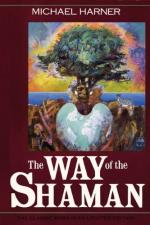
|
Chapter 1, Discovering the Way
1. In "The Way of the Shaman," the author shows similarities between:
(a) Younger and older shamans.
(b) Once dominant spiritual belief systems.
(c) Real and fake shamans.
(d) Various shamanic spiritual belief systems.
2. The author shows that all religious traditions share:
(a) Similarities in styles of worship.
(b) One common origin.
(c) Mystical and symbolic similarities.
(d) A mistrust of shamans and mysticism.
3. What does Harner compare his near-death experience with the Conibo to?
(a) Teachings of Confucius.
(b) Ancient Daoism stories.
(c) Descriptions in the Bible.
(d) The concept of reincarnation.
4. Harner asserts that shamanism transcends any particular what?
(a) Scholarly assessment.
(b) Philosophy.
(c) Culture.
(d) Falsehood.
5. Harner's reports of the rituals, symbols, and visions of the different tribes he observes are what?
(a) Disturbing.
(b) Foreign.
(c) Simplistic.
(d) Similar.
6. Harner claims that when he shared his vision of dragon-like creatures that appeared from outer space with another shaman, that person:
(a) Warned Harner to stay away from the creatures.
(b) Did not understand the significance of the creatures.
(c) Immediately recognized the creatures.
(d) Explained the creatures represent suppressed desires.
(read all 180 Multiple Choice Questions and Answers)
|
This section contains 6,065 words (approx. 21 pages at 300 words per page) |

|




